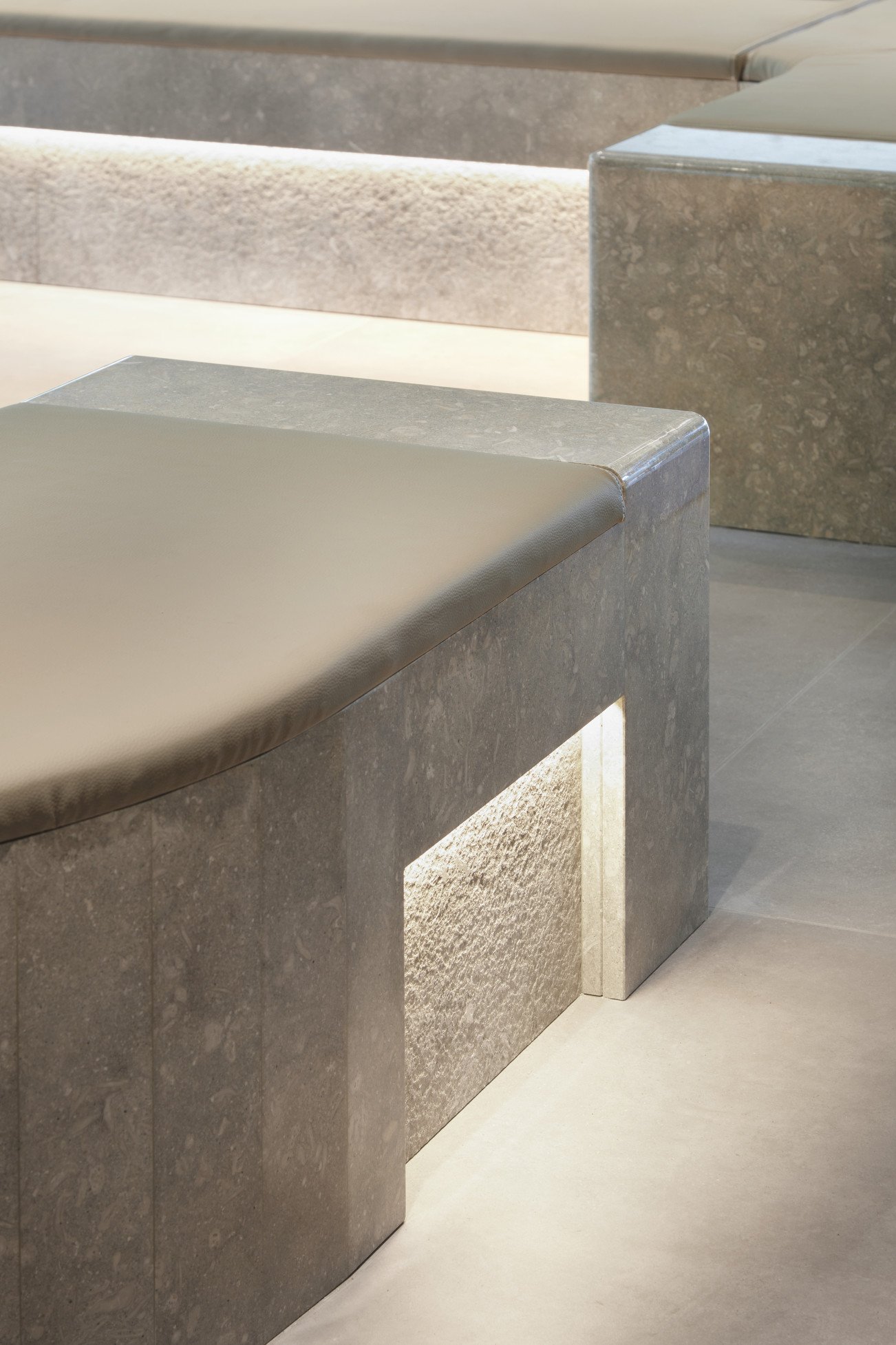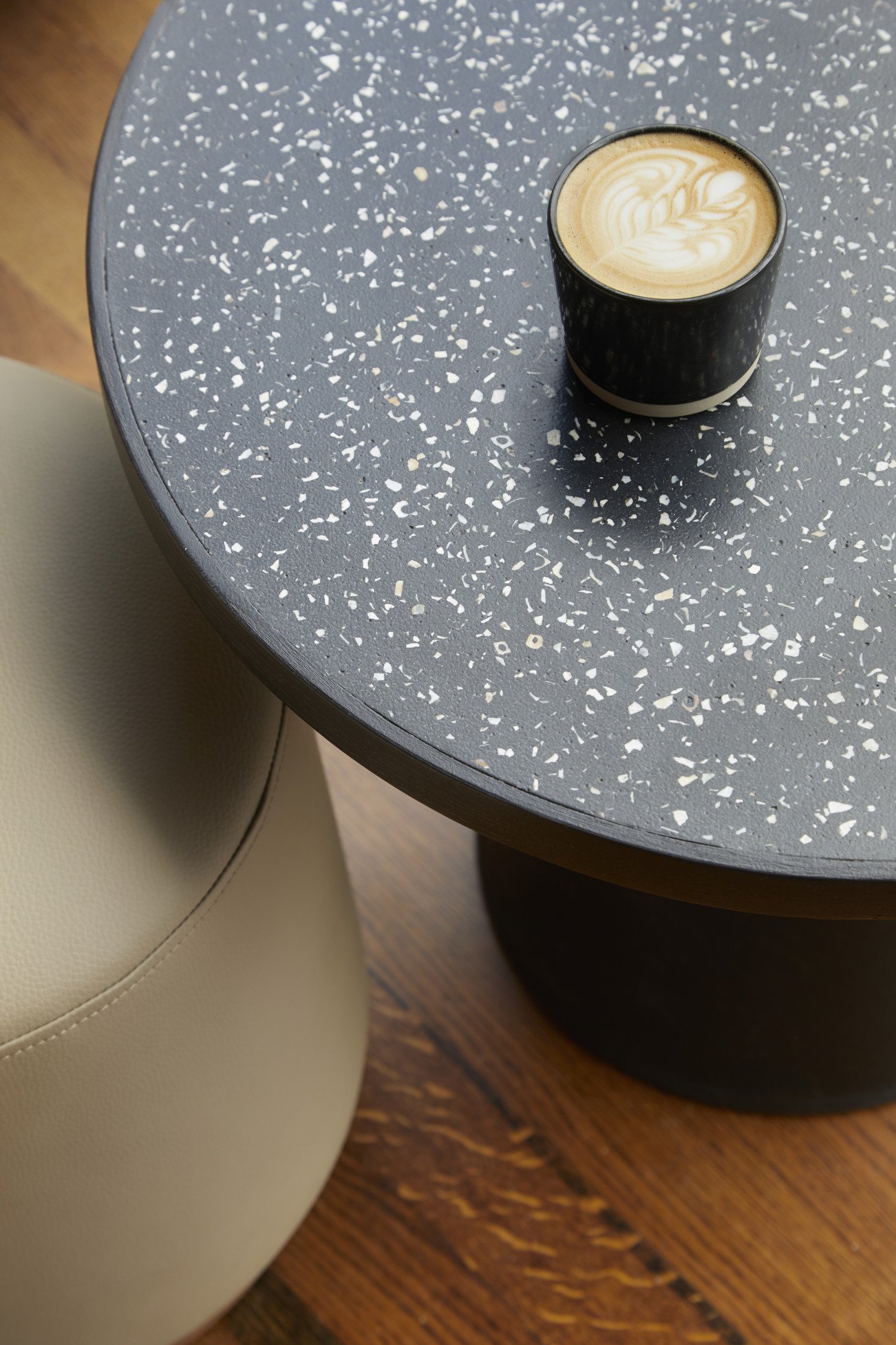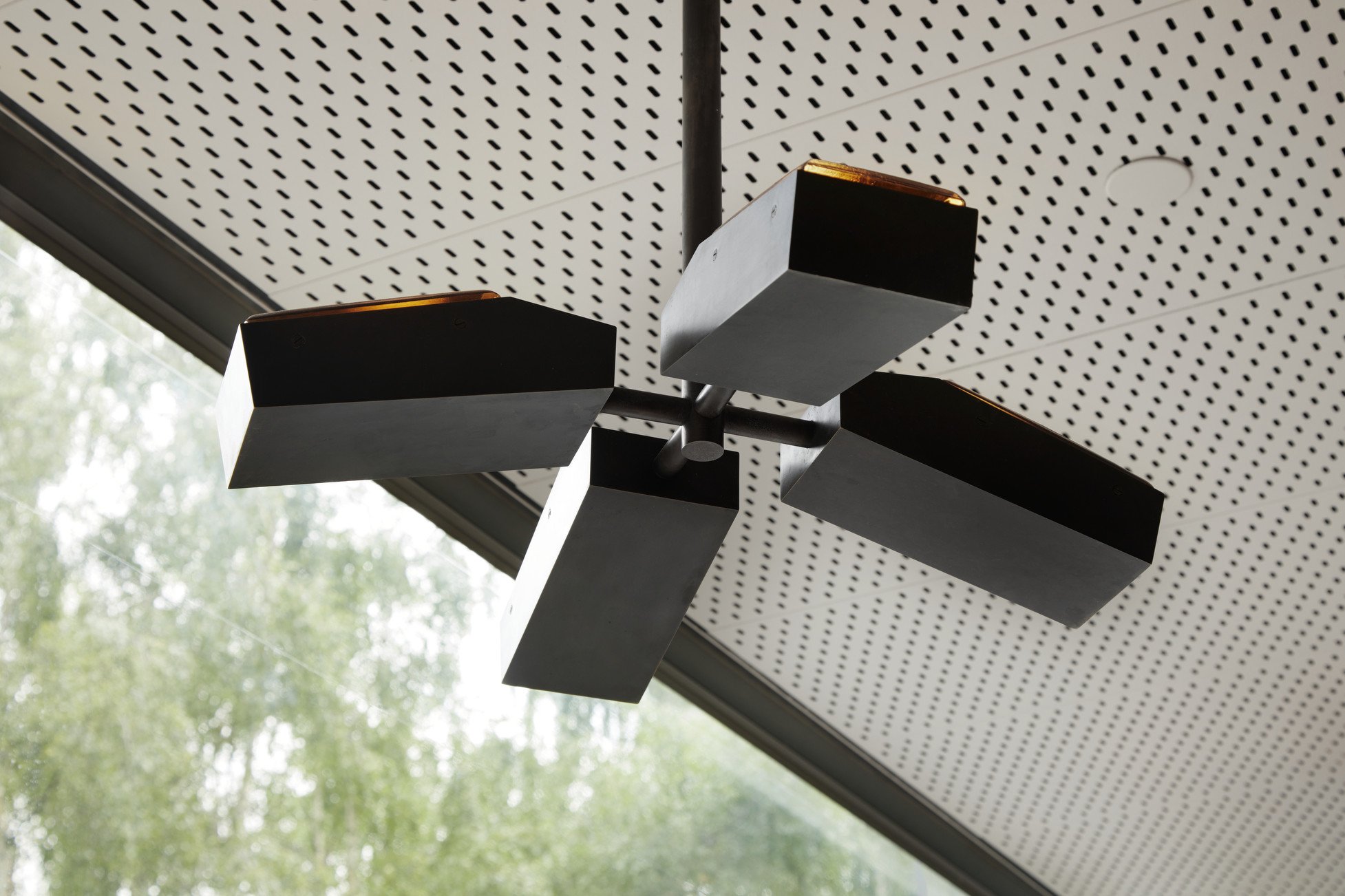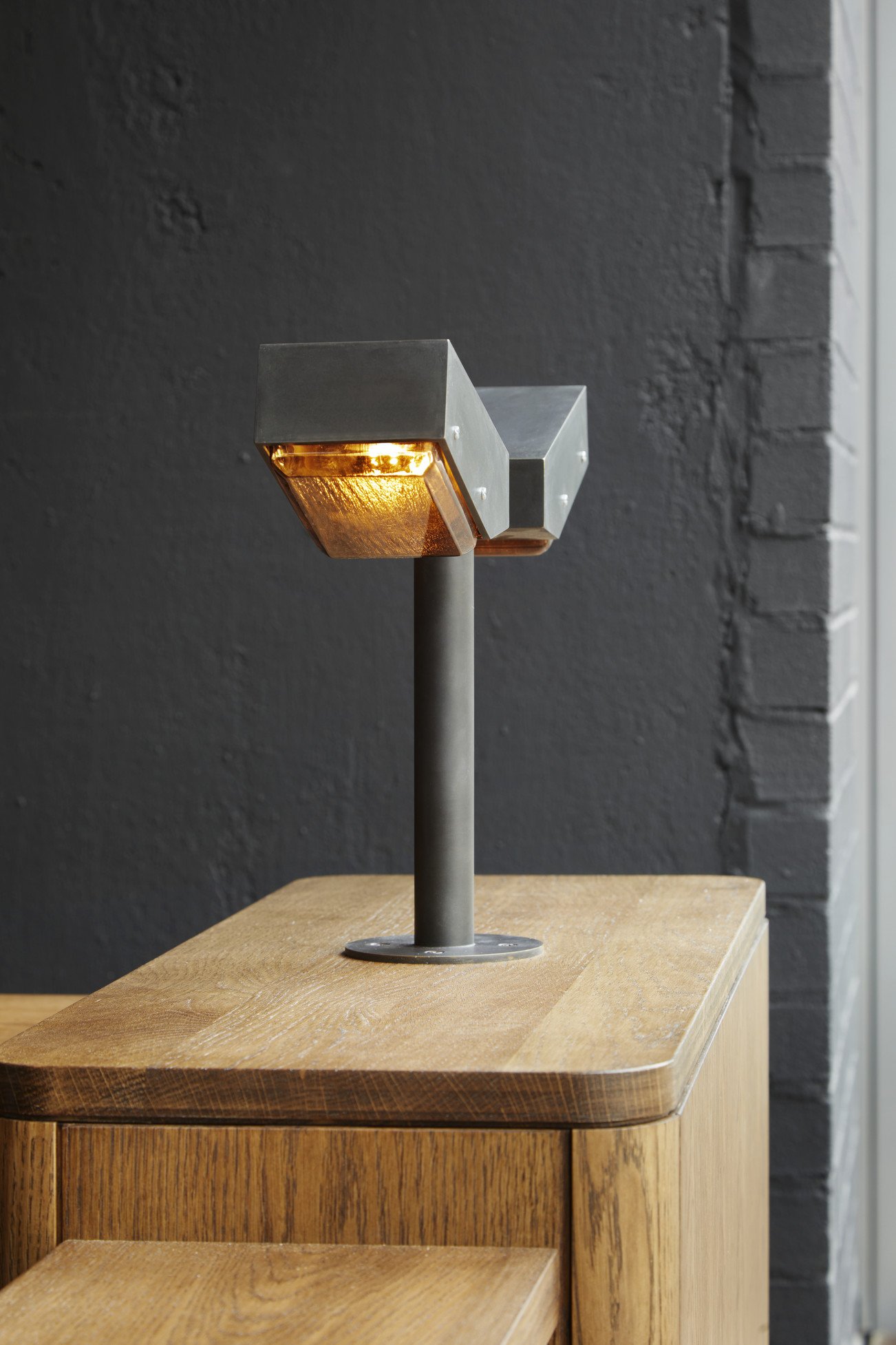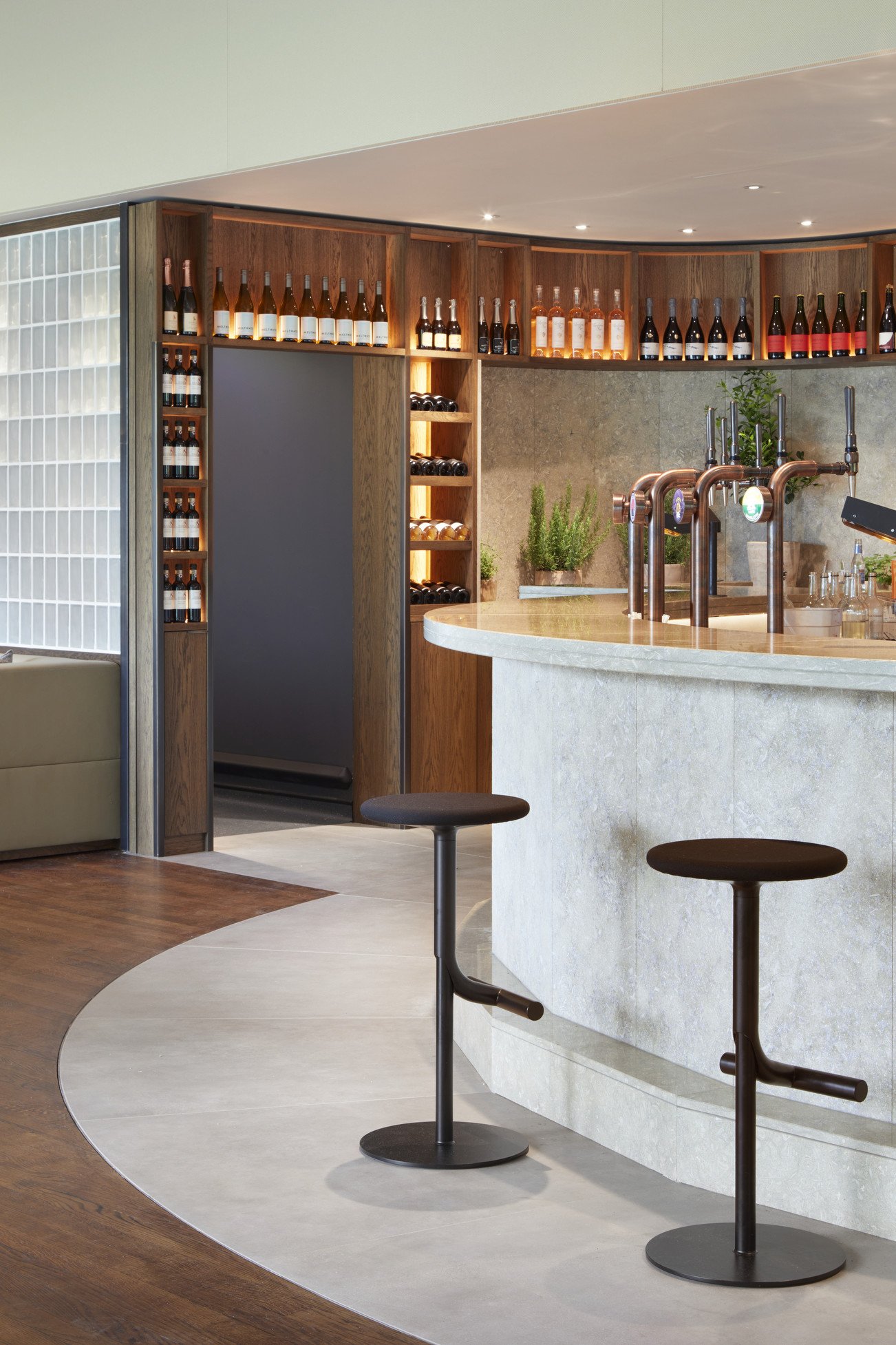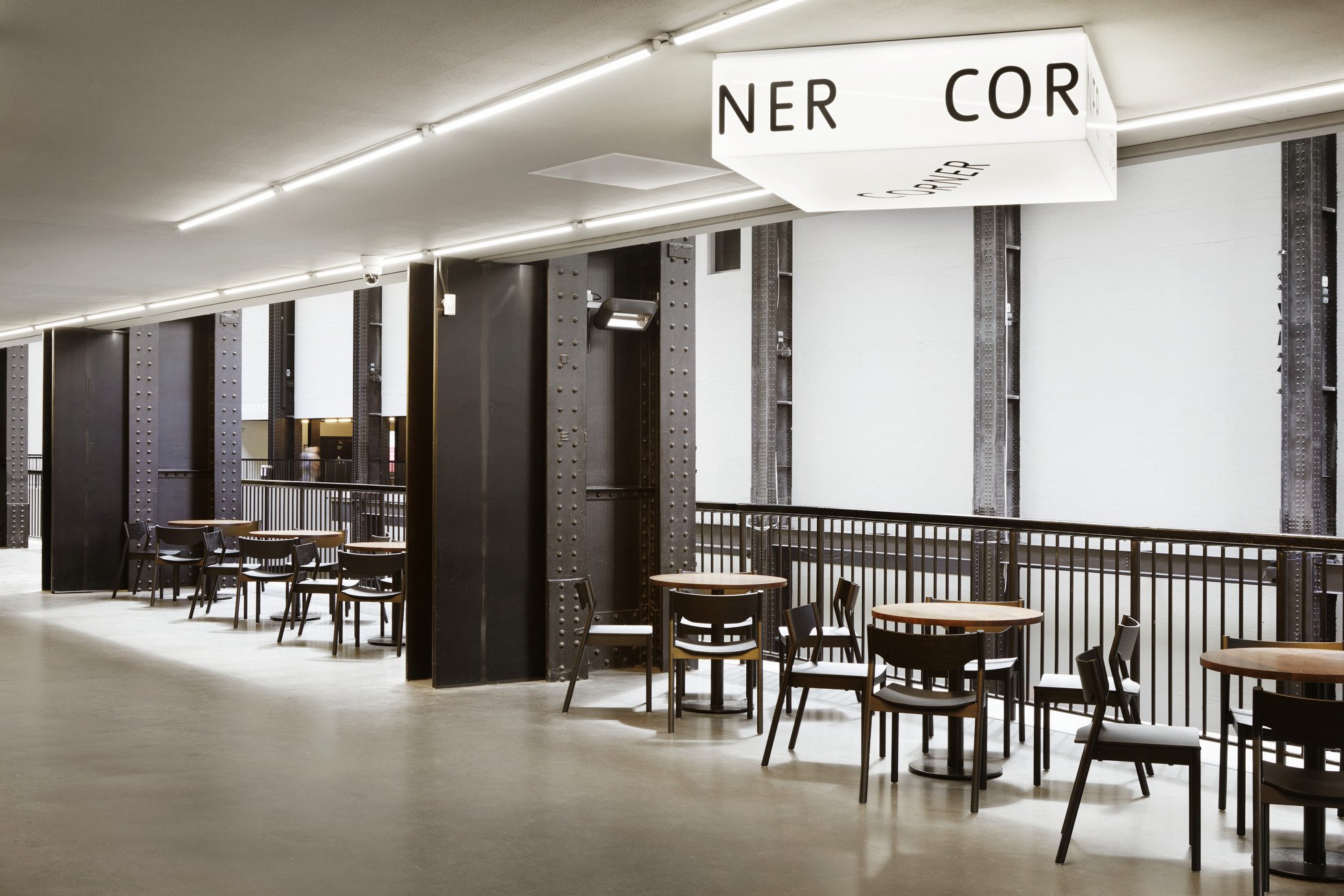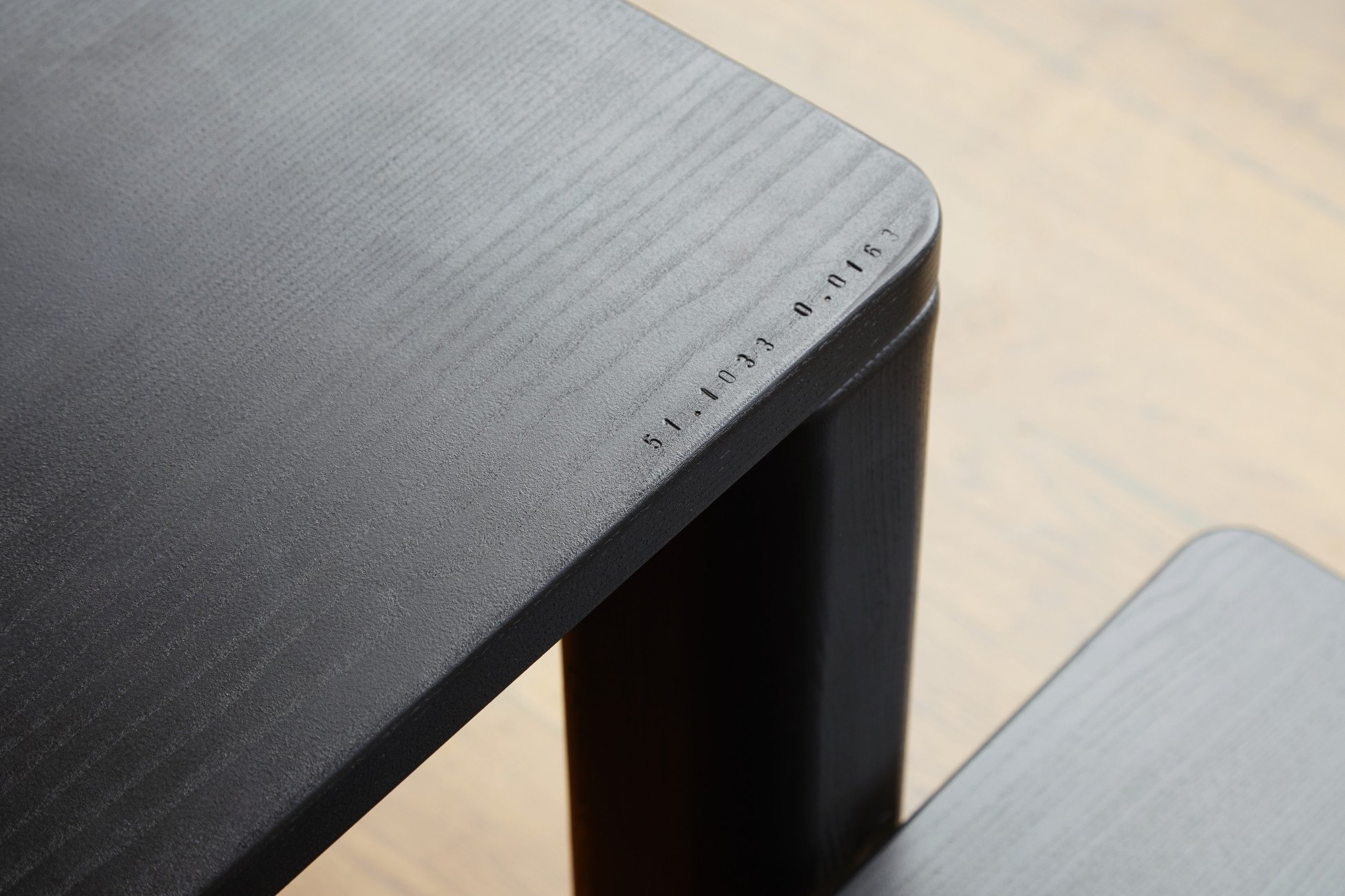Heading Towards Net Zero at London’s Tate Modern
From furniture made from waste to a conscious supply chain, Holland Harvey designed the Corner café for maximum durability and positive impact
Words by Harriet Thorpe. Images by Holland Harvey
In the fast-paced, high turnover food and beverage industry, the interiors of cafés and restaurants are notoriously wasteful. Under intense daily use, often by hundreds of people, interiors must be frequently refreshed and renewed to stay efficient for staff and appealing to diners.
So when it came to designing the ground floor café at one of London’s most popular cultural attractions, the Tate Modern, architecture and design studio Holland Harvey knew they had a challenge on their hands. The project demanded not just durability in design but also a commitment to sustainability, in line with their own values as a B Corp and mirroring the aspirations of the Tate as a forward-thinking institution.
A giant task
The Tate Modern is, after all, one of London’s biggest advertisements for re-use. While the tough brick, steel and concrete building holds vast amounts of embodied carbon, it has served the city since 1891, first as a power station and now as an art gallery since the year 2000. It receives millions of visitors per year (nearly 4 million in 2022, 6 million in 2019). It is so sturdy, durable and flexible in form, thanks to its tough materials and vast open-ended spaces, that it’s easy to imagine the building still standing in the year 3000 – perhaps even with a new function.
In the meantime however, the ground floor ‘Level 1’ café, originally designed by architects Herzog & de Meuron, needed a refresh. It had lasted around 20 years until it had to shut down during to the pandemic. Holland Harvey’s new café interior intends to last at least another 20 years. Just like the power station itself, durability in material and aesthetics was top of the agenda. Moreover, as the café (now named ‘Corner’) forms a social bridge between the Thames and the Turbine Hall, it needed to be just as resilient, welcoming and accessible as a piece of public space.
“There's no guidebook to how you can turn hospitality interiors into interiors fit for a net zero future. Fundamentally, it's about measuring, reporting and improving,”
Sustainability at the core
In parallel, Holland Harvey had to balance these demands with their desire for the smallest carbon footprint possible. Each material decision was a negotiation, assisted by their data driven approach, based upon standards such as RIBA Net Zero, the UN Sustainable Development Goals, BREEAM and B Corp, which they edit for each project into a “custom kit”. “It’s a framework that is just a guide for now, because there's no guidebook to how you can turn hospitality interiors into interiors fit for a net zero future. Fundamentally, it's about measuring, reporting and improving,” says Jonathan Harvey, who founded Holland Harvey with fellow architect Richard Holland in 2012.
Wooden floors were patched up with wood from an existing gallery bench and sanded. Existing gallery furniture such as the ‘Muji chair’ designed by Jasper Morrison in 2000 was upcycled with new upholstery and ebonised. A new 30mm-thick Italian limestone countertop and central seating area form a social anchor. (As well as being durable far beyond 20 years, stone is a natural material that can be resurfaced, reused and recycled.) Custom-made glass bricks inspired by the previous café design divide the space, while tactile touch points, such as the faux leather upholstery and FSC-certified oak timber servery, bring comfort.
An impact-driven ecosystem
One way Holland Harvey widens their impact is through their supply chain. They seek out collaborators who also embed environment and social value into their decisions. For Corner, they specified 10 tables from Brighton-based Spared, a design company that makes furniture and products out of waste materials. In this case, they used waste coffee beans from the Tate’s in-house roasters and oyster shells from the Thames within a 60 to 70% waste material aggregate set in jesmonite. The display plinths and cutlery holders are made of low-carbon concrete innovated by Sheffield-based Kelham Island Concrete, which incorporates a waste by-product of the steel industry into the material.
Another collaborator is Goldfinger, a furniture maker and social enterprise located at the base of London’s brutalist high-rise, Trellick Tower. The organisation sources wood from trees that have been cut down in London and has a community woodworking apprenticeship programme. For Corner, Holland Harvey commissioned a series of tables laser-etched with the London coordinates of where the tree fell. “We want to tell a story about circularity through these tables,” says Holland. “Out of the millions of people who will visit the café, even the tiniest percentage is still a significant number of people who might take interest in the coordinates and understand that you can do things differently.”
“By creating an ecosystem of people that share beliefs, from clients to collaborators, we can be a catalyst for broadening social impact.”
The Holland Harvey-designed, Goldfinger-made furniture collection, which includes tables, stools and benches, will also be available to buy, meaning more business for Goldfinger to support its social impact initiatives. In other projects they have been working with Granby Workshop (an innovative Liverpool-based architectural ceramics manufacturer helping regenerate the neighbourhood of Granby) and Raw Workshop (an Oxford-based reclaimed wood workshop empowering people through skills). “By creating an ecosystem of people that share beliefs, from clients to collaborators, we can be a catalyst for broadening social impact,” says Holland.
“We want to tell a story about circularity through these tables. Out of the millions of people who will visit the café, even the tiniest percentage is still a significant number of people who might take interest in the coordinates and understand that you can do things differently.”
The long road to net zero
Though they’re making inroads, there are still many barriers to implementing circularity, especially when it comes to larger institutions or companies that require warranties and guarantees. “There's a risk element to it,” says Harvey. “[Circular design] is in its infancy. Lots of circular design products are quite new or have to be fabricated bespoke.” It’s also time-consuming to gather data on carbon footprints, because each supplier or manufacturer has a different way of measuring things. “Product data sheets all measure carbon, water usage and VOCs slightly differently. We use a number of guides to specify materials for our projects including Materials 2050 and The Green Book Live,” he continues. Though, he says, certifications such as EPD (Environmental Product Declaration) or C2C (cradle to cradle) can actually create a “barrier to bringing an innovative material to market” due to the long accreditation process.
So, what’s the solution? “The path to reaching a net zero future is made up of not one, but hundreds of incremental gains and improvements,” says Harvey. “And hopefully each decision starts to have a much wider impact,” adds Holland. For them, what’s missing is government policy that mandates adaptive reuse and sustainable choices through policy that drives fiscal incentives. “Currently, the UK government subsidises air travel rather than adaptive reuse. Something is wrong here,” says Holland. “An ideal future looks like a built environment with no option but to make a sustainable choice,” Harvey concludes.


